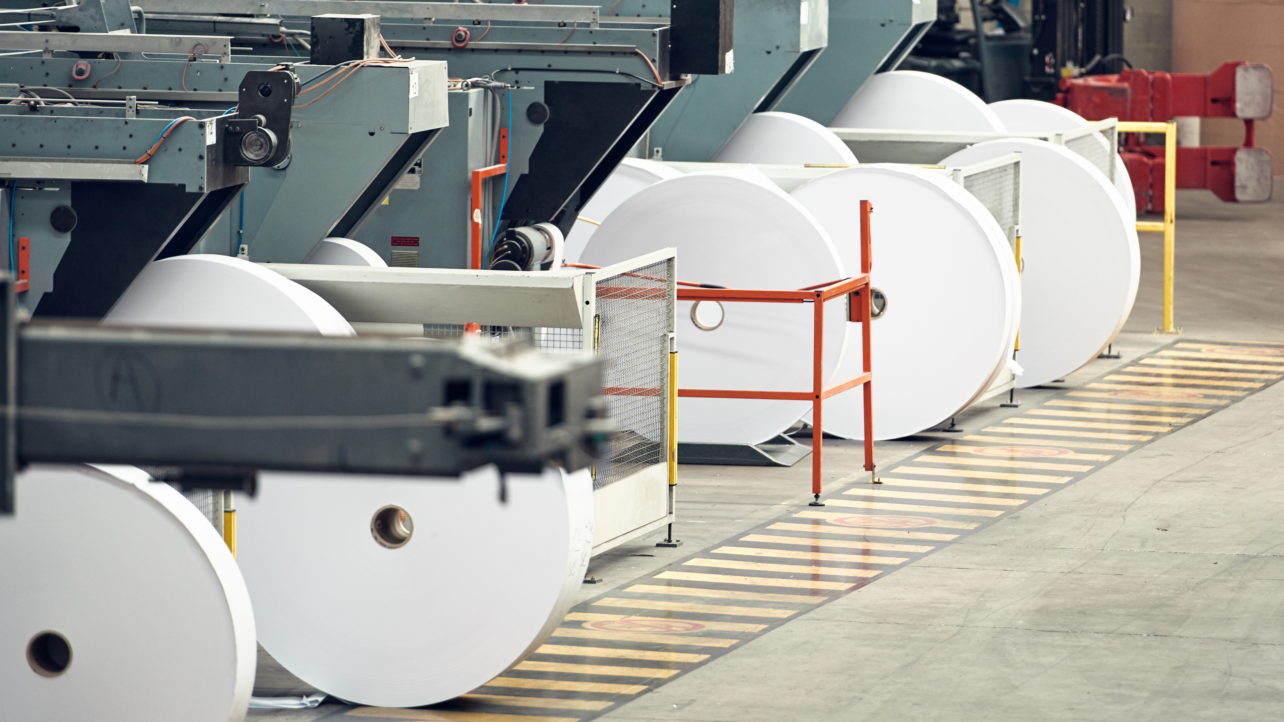Revolutionize your paper manufacturing with AI-driven optimization. Enhance efficiency, cut costs, and achieve autonomous operations like industry leaders Arjowiggins and Oji Paper. Embrace the future of smarter production!
Learn more

By 2030, the National Association of Manufacturers predicts that more than 2.1 million manufacturing jobs could go unfilled. In an industry that is already facing unprecedented labor shortages, this could be the final blow for many producers.
Fortunately, some of the leading Industry 4.0 vendors, like Braincube, have already made autonomous operations a reality for their customers. Despite a massive increase in ‘close the loop’ interest, which just recently peaked in historic search volume, in March and July of 2023, there are only a few companies that claim to have the ability to facilitate autonomous operations.
Autonomous operations, often called ‘closing the loop‘ or the ‘autonomous factory,’ use AI to identify the best production settings that are then sent directly to the factory floor, without human intervention. Many forward-thinking manufacturers consider this the present rather than the future and see technology as a vital component for operational excellence goals. The transition to autonomous operations is rapidly progressing, with some facilities actively piloting automated operations. Even so, the path to autonomous operations is met with skepticism, fear, and at least a little bit of hope. In this article, we explore five essential truths about autonomous operations.

In contrast to common misconceptions, autonomous operations in industrial settings do not replace all human workers with robots. Automation follows predefined rules, (if this, then that) for things like alerts, sensor adjustments, 3D printing, and defect recognition. For example, each time your temperature exceeds limits, an alert is sent to the floor to address it before it causes a wider problem. This binary-type automation is highly effective for cost reduction, improved efficiency, and employee morale.
Autonomous operations go beyond binary automation, leveraging live data to adjust processes and continuously adapt to the conditions. It requires at least one process or task on the production line to be autonomous by sending AI recommendations directly to the PLC or other smart device without requiring human intervention. It supports non-binary decision-making with AI that can instantaneously adjust to incoming data.
Here instead of an automated alert, AI prescribes the ideal set point, range, or speed, to automatically optimize during production. This allows for continuous AI optimization without human intervention, improving efficiency and competitiveness. Autonomous operations are especially beneficial for industries with legacy equipment, staffing challenges, and a high degree of variability. Staying competitive means better customer service and delivery accuracy, fewer stops or defects, and of course higher throughput at the lowest cost that meets requirements, which are common goals manufacturers strive towards for autonomous operations.
Last week, we spoke with a leading manufacturing company eager to embrace autonomous operations. However, they faced tech infrastructure gaps and recognized the need for change management. The desire to “turn some knobs and make it happen” was there, but like most manufacturers, this company has steps to achieve before the autonomous factory.
The good news is that these steps are achievable for any manufacturer with data and a solid strategy. For instance, we recently assisted a manufacturer with a preliminary goal: make real-time data available to the shop floor. Before using Braincube, they struggled to meet quality demands due to delayed reporting, limited real-time performance visibility, and a shop floor that relied on word-of-mouth updates instead of digitizing this information. Starting with integrating data sources and aligning data formats is a cost-effective, high-reward first step toward automation.
For customers further along the autonomous journey who still want the option for human-influenced decisions, AI recommendations can be generated and shared, allowing an employee(s) to decide on acceptance or rejection. This bridges the gap before full autonomy, with automated reports tracking efficiency and AI utilization, improving team alignment.
Historically, one of the major challenges for manufacturers when implementing automation was operator ‘adherence.’ Long-time manufacturing operators were often skeptical or dismissive of technology. However, in recent years, there has been a notable decrease in traditional resistance to adopting technology. It seems the benefits of automation have outweighed the perceived risks.
This positive trend reflects a focused effort to streamline and optimize operational processes, resulting in more efficient workflows. As organizations embrace innovative technologies, implement best practices, and foster a culture of continuous improvement, resistance that often comes with operational changes is diminishing. This decline in push-back not only showcases operators’ adaptability but also signals a changing business landscape where adaptability and agility are vital for success.
GK Lee, a Braincube customer and Process and Data Analytics Manager at ofi, explains, “The ofi team’s domain knowledge about their processes played a big role in getting operators on board.” Because operators can quickly see value in these automated processes, they often become champions of a product like Braincube, because it improves their accuracy and efficiency.

Currently, we have customers implementing closed-loop control, where AI identifies optimal setpoints, feeds them to PLCs, and adjusts settings using optimizations within real-time data. Technological advancements in artificial intelligence, machine learning, and automation are driving manufacturing organizations to delegate more tasks to autonomous systems. In turn, manufacturers embracing Industry 4.0 are bringing industrial profitability to their organizations.
For instance, consider a paper manufacturer aiming to improve quality. From experience, they likely know that speed is a critical factor in their process. To ensure that the winder isn’t moving too quickly, or that that cutter is too far ahead of schedule, AI can connect with relevant IT/OT systems to instantly determine the best speeds based on the desired outcomes, all while integrating current conditions. Intelligent algorithms make autonomous operations a tangible reality, even if it’s hard to fathom ‘how.’
The autonomous factory should never be confined to models or simulated data. While simulation tools and virtual models are undoubtedly valuable for testing and optimizing autonomous systems, they should serve as stepping stones towards real-world implementation, rather than the ultimate goal. The true potential of autonomous factories lies in their ability to operate in the physical world, utilizing real-time data, sensors, and automation to drive efficiency and productivity.
By interrelating production variables with AI, our customers receive prescriptive set points, can apply ‘if, then’ scenarios, and even directly implement AI recommendations on the production floor. Our AI algorithm was designed to crossrank your objectives, allowing you to determine the right scenario to consider optimizing people, profits, and sustainability initiatives simultaneously.
Autonomous operations are not a vision of the future; they are the reality of today. Manufacturers continually balance competing demands, often making difficult choices. However, as AI continues to evolve, automation is reshaping our work and lives. While we read and learn about these advancements, the world is becoming more self-reliant, efficient, and responsive, ushering in an era of innovation and productivity that is shaping the future.
It’s time to move beyond theoretical possibilities and start implementing practical, tangible solutions. This shift is essential to unlock the full transformative potential of autonomous manufacturing, benefiting people, profits, and the planet.

Understand the key differences between AI, machine learning, and data science for manufacturing. Plus, learn how they work together with a real use case.

Autonomous technologies give employees data to work faster and more effectively. Learn about transformative technologies like Machine Learning and Artificial Intelligence.

Manufacturers worldwide are using computer vision AI to automate and scale quality processes, reducing defects and improving customer satisfaction.